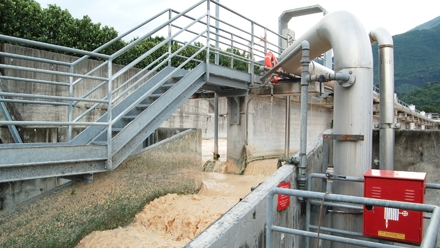
Ever wondered how paper is made? The basics of the industrialised making of paper have not changed much since the first operational fourdrinier machine was installed at the Frogmore Mill in Hertfordshire back in 1803.
What has changed is the automation around papermaking, the innovative software to drive faster and larger machines, the add-ons which improve efficiency and the quality control that enables the machines to keep running, decrease downtime and reduce financial cost.
The History
For centuries the materials on which we write have been handmade. The Egyptians used papyrus made from cane found along the Nile. The Hebrews and Persian made parchment from animal’s skin and the Chinese were making a cousin to the paper we use today as far back as 105 AD – this was produced using rags and vegetable peelings.
By the 7th century the secret of papermaking had spread to Japan, Italy and Spain with manufacturing sites established in the 11th century. A paper making facility was set up in Fabriano in the second half of the 13th century.
It wasn’t until the 1400’s that the use of paper became more widespread and demand increased, this was due to the invention of letterpress printing by Guttenberg – but much of the paper was still handmade and produced from rags and old rope.
It was not until the industrial revolution the paper production as we know it really got underway, the rise in demand led to a new raw material source being found as there was not enough rags and rope to produce the volumes of paper needed – this saw the use of tree fibres being used as the basis for the raw materials for papermaking.
How is Paper Made?
First, workers harvest trees, mostly from special tree-growing areas called tree farms. After the trees are removed, more trees are planted in their place. The logs are transported to the paper company where they get a bath to rinse away dirt and other impurities before being turned into small chips of wood.
The chips are then sorted according to size and moved to the pulping operation, where they will be turned into pulp for making paper. In the pulping stage, the individual wood fibres in the chips must be separated from one another. This can be accomplished using one or more pulping techniques.
The type of paper that’s being made determines the pulping process that is used. The finished pulp looks like a mushy, watery solution. But if you look at it under a microscope, you will see that the individual wood fibres have all been separated.
Now it’s time to make paper out of the pulp. That means getting the water out of the wood fibres, since this papermaking stock is about 99% water. The first area in which this takes place is called the wet end of the papermaking machine.
First, papermakers spray the stock onto a long, wide screen, called a wire. Immediately, water begins to drain out the bottom of the wire. This water is collected so that it can be reused over and over again.
Meanwhile, the pulp fibres are caught on the top side of the wire, and begin to bond together in a very thin mat. The fibre mat remaining on the wire is then squeezed between felt covered press rollers to absorb more of the water. Even when this wet end work is over, the pulpy stuff on the wire is still about 60% water.
In the dry end, huge metal cylinders are heated by filling them with steam. The wet paper, which can be up to 30 feet wide, passes through these hot rollers – sometimes dozens of them, and often in three to five groups. Heating and drying the wet sheet seals the fibres closer and closer together, turning them gradually from pulp into paper.
When you look at a piece of paper, can you find any difference in thickness in that single sheet? Probably not, thanks to a part of the paper machine called the calender – big, heavy cast iron rollers that press the drying paper smooth and uniform in thickness.
Sometimes the paper is coated, often with fine clay, to make it glossier and easier to print on.
A bit more drying, and then rolled onto a big spool or reel, the pulp – a miraculous mat of fibres from trees – has become paper, ready for a thousand uses.
To request paper samples and find out what The Lemon Press can do for you, call us on 01527 510262 or email info@nulllemonpress.co.uk






